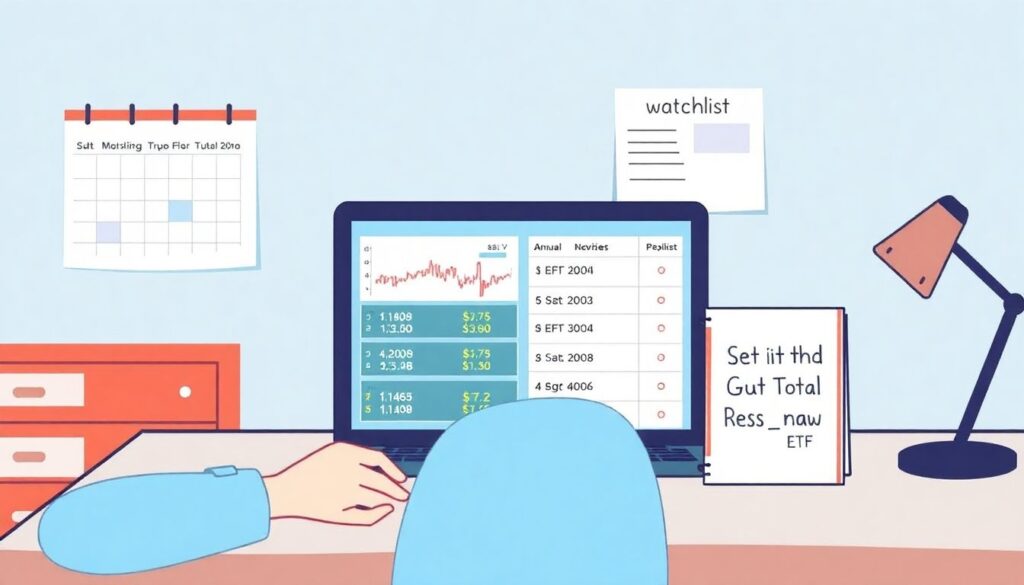What Are ETFs, Really?
Exchange-Traded Funds (ETFs) have exploded in popularity over the past two decades—and for good reason. They offer a flexible, low-cost way to invest in a wide range of assets. But behind the buzzwords and glossy brochures, what are ETFs really? Let’s break it down in plain English.
ETFs are essentially baskets of securities—like stocks, bonds, or commodities—that trade on an exchange just like individual stocks. Think of them as a hybrid between mutual funds and stocks. You get the diversification of a mutual fund, with the trading flexibility of a stock.
—
Step 1: Understand the Core Structure of ETFs
How They Work
Each ETF holds multiple assets. For example, a tech ETF might include shares from Apple, Microsoft, NVIDIA, and Google. When you buy one share of the ETF, you’re indirectly investing in all those companies.
The ETF provider (like Vanguard or iShares) creates a fund, fills it with assets, and sells shares of that fund on the stock market. Investors can then buy or sell those shares throughout the trading day.
Types of ETFs
Not all ETFs are built the same. Here are a few common types:
– Index ETFs: Track a specific index like the S&P 500.
– Sector ETFs: Focus on industries like healthcare or energy.
– Thematic ETFs: Trend-driven, such as clean energy or artificial intelligence.
– Bond ETFs: Comprise government or corporate debt instruments.
– Inverse & Leveraged ETFs: High-risk, often misunderstood tools for short-term strategies.
Pro Tip: If you’re just starting out, steer clear of leveraged and inverse ETFs—they’re not beginner-friendly and can behave unpredictably.
—
Step 2: Pick the Right ETF for Your Goals
Define Your Objective First
Before choosing an ETF, ask: What am I trying to achieve?
– Long-term growth?
– Income through dividends?
– Exposure to a specific sector?
Once you know your goal, filter ETFs accordingly.
Watch Out: Don’t chase performance. Just because a tech ETF performed well last year doesn’t mean it will this year. Instead, look at fundamentals, diversification, and expense ratios.
Evaluate Key Metrics
Here’s what you should check before buying:
– Expense Ratio: The lower, the better. Anything under 0.2% is solid.
– Liquidity: High trading volume means easier buying/selling.
– Tracking Error: Measures how well the ETF mirrors its benchmark index.
– Underlying Holdings: Know what’s inside your ETF. Some funds have overlapping assets, which can unknowingly over-concentrate your portfolio.
—
Step 3: Know How to Buy and Hold (or Not)
Buying ETFs
You can buy ETFs through any brokerage account—just like you would with a stock. Use limit orders for better control over pricing, especially in volatile markets.
Holding Strategy: Passive or Active?

You don’t have to be an active trader. In fact, most ETF investors are better off holding passively. But if you’re comfortable with some risk and want to rebalance quarterly, that’s okay too.
Unexpected Angle: Consider using dollar-cost averaging. Instead of investing a lump sum, invest fixed amounts regularly. This reduces the emotional impact of market swings.
—
Step 4: Avoid Common ETF Pitfalls
Mistake #1: Over-Diversification
Yes, there is such a thing. Holding too many ETFs can lead to overlap. You might think you’re diversified, but if five of your ETFs all include Apple, are you really spread out?
Mistake #2: Ignoring Tax Implications
ETFs are tax-efficient—but not tax-free. If you sell them at a gain, you’ll owe capital gains taxes. Also, some bond ETFs generate taxable income annually.
Mistake #3: Not Understanding the Index
Many investors buy ETFs without knowing what index they track. For example, some “global” ETFs exclude emerging markets. Read the fine print.
—
Step 5: Think Beyond the Obvious
Innovate Your ETF Strategy

Sure, ETFs are great for passive investing. But you can use them creatively:
– Hedge your portfolio with inverse ETFs during downturns (if you truly understand the risks).
– Build a core-satellite strategy, where a broad-market ETF is your “core,” and niche ETFs (like blockchain or space tech) are “satellites.”
– Generate income via covered call ETFs—these funds combine equity exposure with options strategies to produce income.
Caution: These advanced strategies require deeper knowledge. Don’t dive in without doing your homework.
—
Tips for New Investors

– Start Simple: Begin with one or two broad-market ETFs (like S&P 500 or total market ETFs).
– Set It and Forget It—Almost: Automate your contributions, but review your portfolio at least annually.
– Use a Watchlist: Track ETFs you’re interested in without immediately buying. Observe their behavior over time.
—
Final Thoughts
ETFs are one of the most powerful tools in modern investing—but only if you understand how to use them. They’re not just “easy mutual funds” or “cheap stocks.” With the right approach, they can help you build a diversified, low-cost, and tax-efficient portfolio.
The key? Stay curious, avoid complexity for complexity’s sake, and don’t let trends dictate your strategy. After all, even the flashiest ETF won’t help if it doesn’t align with your goals.

